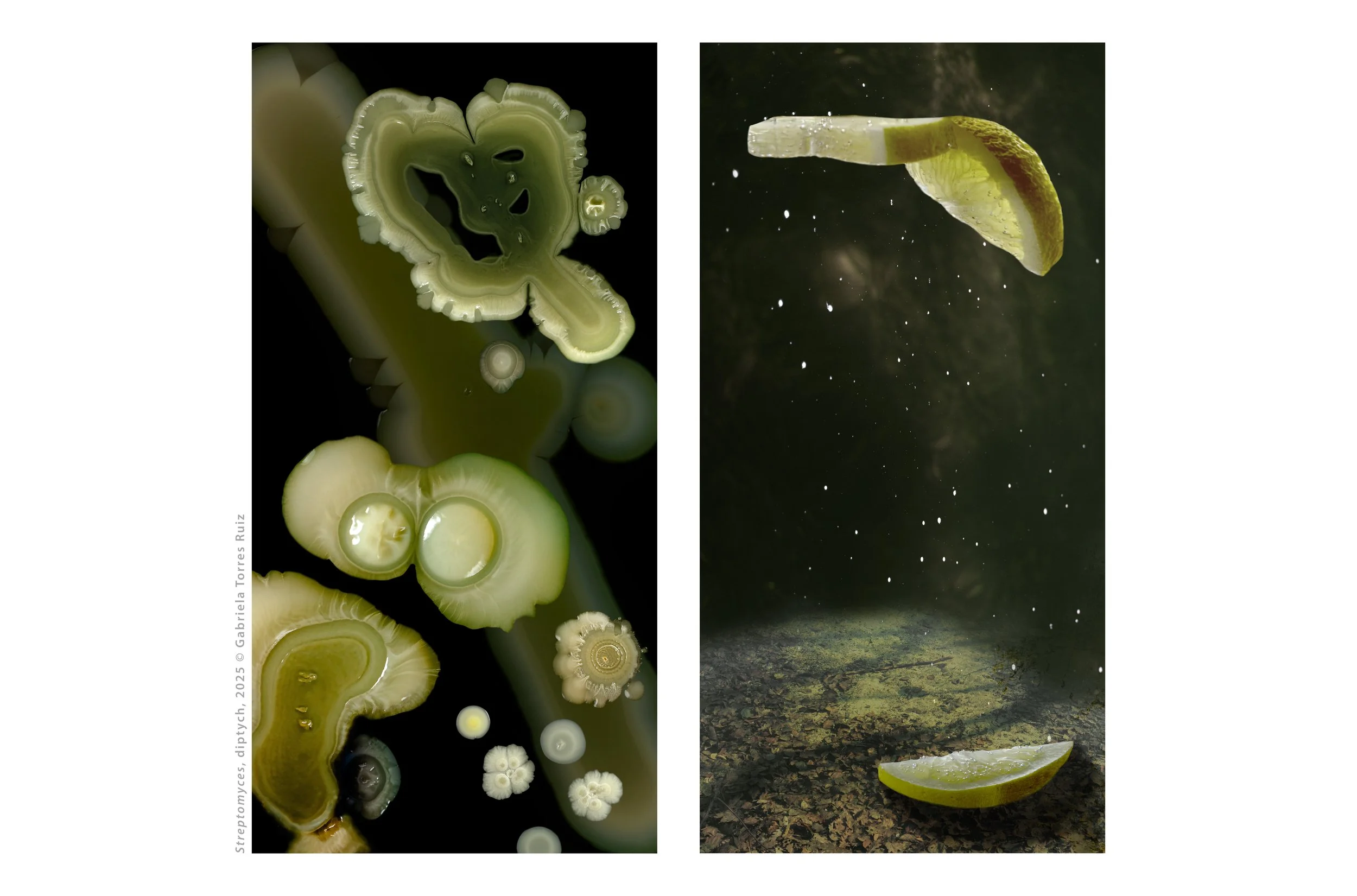Streptomyces (in general) – Nature’s Doctor with Soil Under Its Nails
The smell of rain after a dry summer’s day, the earthy scent of a forest floor, the bright colors of microbial colonies on a Petri dish – all of these can be traced back to Streptomyces. This genus of soil-dwelling bacteria is one of the most inventive chemists in nature. It produces scents and pigments, recycles organic matter, and has given humanity more antibiotics than any other organism. Quietly, beneath our feet, Streptomyces has shaped medicine, ecology, and even the way we experience the smell of earth.
A soil-bound chemist
Streptomyces bacteria are found worldwide, mostly in soil, where they weave through grains of sand and decaying leaves in long, branching filaments. These thread-like structures resemble fungal mycelium, blurring the line between bacterial and fungal life. By breaking down organic matter, they recycle nutrients, maintain ecological balance, and feed countless other organisms.
But Streptomyces are not just decomposers – they are fierce competitors. To defend themselves in the crowded soil environment, they produce an extraordinary diversity of bioactive compounds. These molecules act as weapons, signals, and shields. Some are antibiotics that kill rival microbes, others are antivirals, antifungals, or insecticides. Some even act as plant growth promoters, helping roots take up nutrients and protecting them from disease. In this way, Streptomyces play a central role both in sustaining ecosystems and in shaping the microbial wars beneath the surface.
The source of antibiotics – and resistance?
The medical significance of Streptomyces cannot be overstated. More than two-thirds of the antibiotics used in modern medicine were originally derived from this genus. Streptomycin, tetracycline, erythromycin – drugs that have saved millions of lives – all trace back to these soil bacteria.
Their gift to medicine, however, also carries a paradox. Because Streptomyces must protect themselves from their own antibiotics, they naturally carry resistance genes. These genetic defenses allow them to survive their own chemical arsenal. But in the interconnected microbial world, such resistance genes can spread to other bacteria, including pathogens that infect humans. Thus, Streptomyces stands both as a source of cures and as a potential contributor to the growing challenge of antibiotic resistance.
Color, scent, and versatility
Beyond their medical role, Streptomyces add character to the environment. Many species produce pigments in brilliant shades of blue, red, orange, or pink, often shimmering like jewels on Petri dishes. These pigments may protect cells from light or act as chemical signals in microbial competition, but to us they are striking reminders that soil microbes are anything but dull.
Perhaps their most famous sensory gift is geosmin – the compound responsible for the earthy scent we smell after rain. Geosmin is produced by Streptomyces in the soil, carried through the air after a storm, and detected by our highly sensitive noses. That familiar smell, comforting and nostalgic, is in fact microbial perfume.
But versatility goes further. With their broad metabolic toolkit, Streptomyces can feed on an unusually wide variety of food sources. This flexibility allows them to produce not only antibiotics but also antifungals, immunosuppressants, anti-parasitic drugs, biodegradable plastics, and fine chemicals used in agriculture and industry. Few microbes are as versatile, and fewer still have had such a profound impact on human society.
An invisible hero in our lives
From soil to laboratory to pharmacy, Streptomyces has been a quiet yet powerful force in shaping our world. In the soil, it recycles nutrients, colors its surroundings, and perfumes the air with geosmin. In the laboratory, it provides compounds that become medicines, agrochemicals, and biotechnological tools. In the pharmacy, it has saved countless lives with its antibiotics.
Studying Streptomyces also helps us understand how bacteria interact and defend themselves. Each new compound discovered opens the door to fresh medical or industrial applications. At the same time, awareness of their natural resistance systems reminds us of the delicate balance between using antibiotics and preserving their effectiveness for the future.
Creativity beneath our feet
The story of Streptomyces is a story of hidden creativity. These bacteria remind us that the soil beneath our feet is alive – not inert dirt, but a dynamic ecosystem filled with microscopic inventors. They recycle, they protect, they compete, and they create. Their molecules have shaped the history of medicine and continue to inspire new therapies for the future.
When we breathe in the scent of wet earth after rain, we are inhaling the invisible signature of Streptomyces. When we take antibiotics, we are relying on their evolutionary strategies for survival. These microbes remind us that the ground is full of unseen allies – chemists, healers, and artists working in miniature, helping us survive and thrive.
Text developed in collaboration with Prof Natalia Tschowri, Leibniz Universität Hannover
